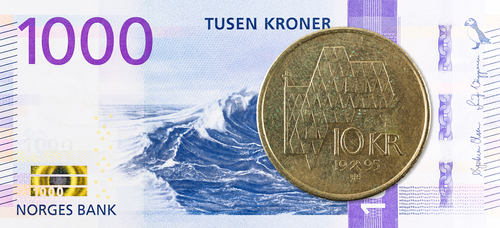The Norwegian krone, symbolized as “NOK” and known locally as “krone” (plural “kroner”), is the official currency of Norway. For travelers, expats, and international money transfers, understanding the Norwegian krone is vital for managing finances effectively and getting the best exchange rates.
With a history embedded in Norway’s rich culture and designed to endure the demands of a modern economy, the krone holds its ground as not only a functional currency but also an insight into Norway’s thriving economy. This article serves as a comprehensive guide to decoding NOK, why it matters, and how it compares with other global currencies.
A Brief History of the Norwegian Krone
The Norwegian krone was introduced in 1875, replacing the speciedaler as Norway joined the Scandinavian Monetary Union. While the union dissolved in 1914, Norway retained its krone, establishing it as the proud and independent currency of a growing nation.
Designed to reflect the values of the kingdom and its economic prowess, NOK has evolved to stay relevant in international markets, maintaining a free-floating exchange rate since the 1990s. Its stability, driven by Norway’s strong economy, makes it a noteworthy currency for many across the globe.
If you want to learn about other fascinating currencies and their backgrounds, check out this post on unique world currencies.
Key Features of the Norwegian Krone
1. Denominations
The krone is available in both coins and banknotes. Coins start at 1 krone and go up to 20 kroner, while banknotes come in denominations of 50, 100, 200, 500, and 1000 kroner. The designs of these coins and banknotes feature Norwegian landscapes, notable figures, and cultural symbols.
2. Controlled by the Norges Bank
The Norwegian central bank, Norges Bank, is responsible for the issuance and regulation of the country’s currency, ensuring both stability and security. They continually update designs to include anti-counterfeiting features.
3. Strong Global Reputation
With Norway’s wealth funded by its oil and gas industries, the krone has a firm foundation among global currencies. Despite some fluctuations, it remains sought after in international financial markets.
Where Is the Norwegian Krone Used?
The Norwegian krone is primarily used within Norway, including its dependencies such as Svalbard and Jan Mayen. It is also accepted in certain Swedish or Danish establishments near the Norwegian border, particularly in tourist areas. However, for international transactions, converting NOK may be required.
How Does the Norwegian Krone Compare in Global Markets?
The Norwegian krone is often seen as a “commodity currency” because of its strong ties to oil and gas exports, which play a significant role in Norway’s economy. This causes the NOK to fluctuate in tandem with oil prices.
For instance, periods of high oil demand can strengthen the krone, while declines in oil prices can cause it to depreciate against currencies like the US dollar, euro, or British pound. This characteristic makes it both unique and potentially volatile in comparison to more stable reserve currencies such as the USD.
If you’re planning to move funds internationally, understanding exchange rate trends is essential. Learn more about securing the best rates for your money transfers via this helpful guide.
Benefits of Using the Norwegian Krone
1. Transparent Currency
The structure of the Norwegian currency system makes it easy for international visitors to use and exchange. The simplicity in denominations and wide acceptance within Norway ensures a seamless payment process.
2. Trust in Stability
Norges Bank actively works to stabilize the krone, protecting consumers and businesses from inflation while keeping the currency functional in times of global economic turbulence.
FAQs About the Norwegian Krone
Why isn’t Norway part of the Eurozone?
Norway chose to retain its own currency to maintain monetary policy independence. This allows Norges Bank to directly influence the krone in relation to the Norwegian economy.
Where can I exchange NOK?
NOK can be exchanged at most international airports, banks, and currency exchange kiosks. Additionally, ATMs in Norway offer reliable access to cash withdrawals in krone.
Is the Norwegian krone a stable currency?
Yes, the Norwegian krone is relatively stable due to Norway’s economic strength. However, as it is tied to commodity markets like oil, short-term currency fluctuations can occur.
